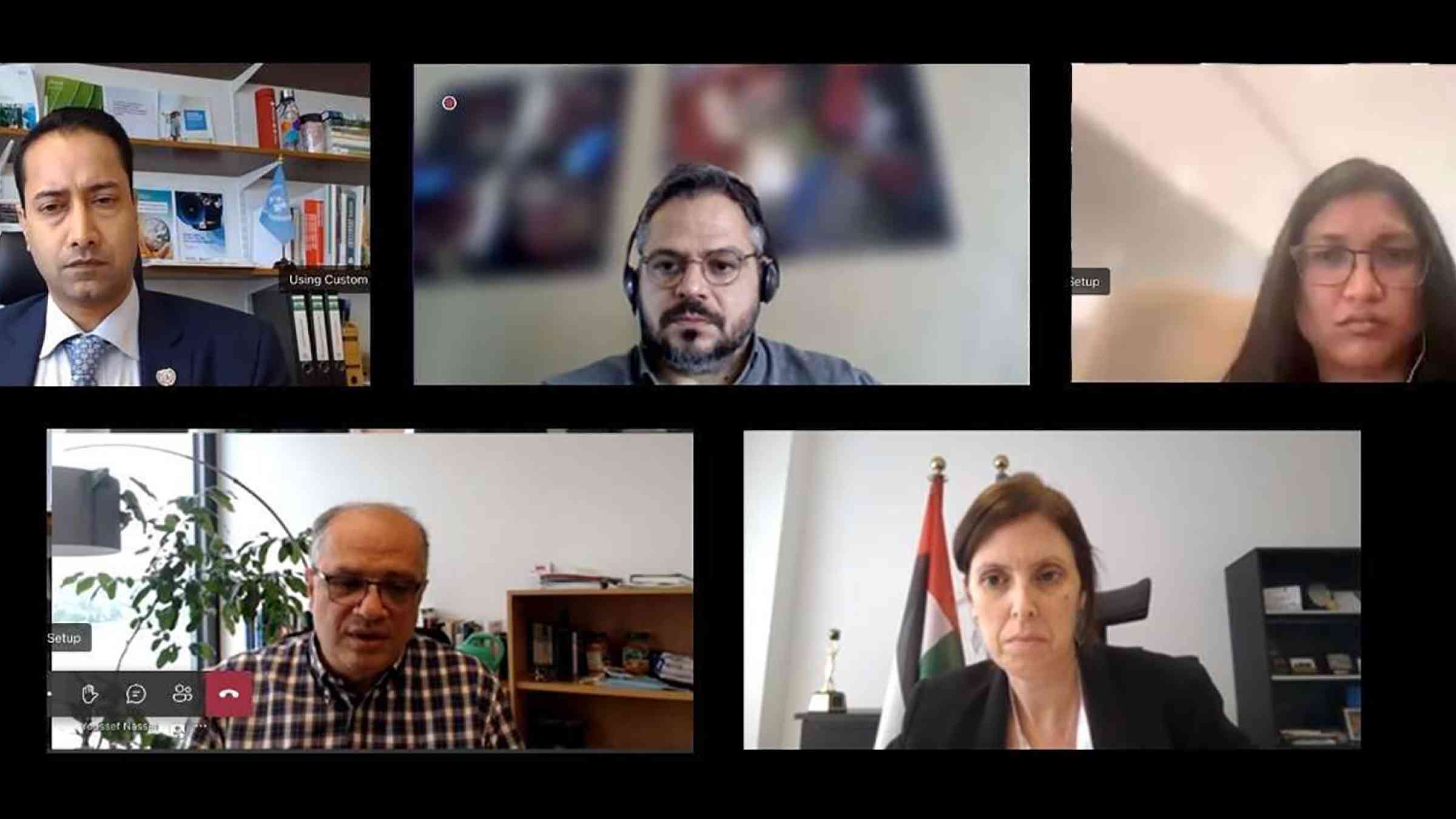Building synergies between disaster risk reduction and climate action: A step towards resilient communities

24 May 2023, In an endeavor to address the urgent challenges presented by climate change and foster resilient communities, the United Nations Office for Disaster Risk Reduction (UNDRR) and the United Nations in the UAE organized a webinar titled "Building Synergies Between Disaster Risk Reduction and Climate Action." This webinar was conducted as part of the 28-For-28 webinar series initiated by the UN in the UAE, aiming to engage the public on climate-related topics ahead of the Climate Change Conference (COP28).
Organized within a week of the adoption of the Political Declaration on the Midterm Review of the Sendai Framework, and with less than two weeks remaining before the Bonn Climate Change Conference, the session brought together a diverse range of experts and stakeholders from prominent organizations, including the United Nations Framework Convention on Climate Change (UNFCCC) Secretariat, the International Organization for Migration (IOM), and the Vulnerable Twenty (V20) Group.
The webinar primarily focused on the critical necessity of adopting a comprehensive risk management approach that encompasses loss and damage (L&D), a shared understanding of risk, and the integrated implementation of disaster risk reduction (DRR) and climate change adaptation strategies. These elements are crucial for formulating effective policies and plans to address climate impacts and build resilience.
Dr. Animesh Kumar, Head of UNDRR Office in Bonn, highlighted the growing complexity of climate change impacts and risks, with simultaneous occurrence of climate hazards and interaction among multiple climatic and non-climatic risks. He emphasized that progress in adaptation and resilience building should be measured against success in reducing losses and damages. Through examples, he highlighted how Sendai Framework metrics and data can inform the global Stocktake, global goal on adaptation, and ongoing discussion on loss and damage.
Throughout the webinar, experts stressed the importance of prioritizing resource management and enhancing the effectiveness of funds dedicated to addressing losses and damages. The global community faces an urgent need to secure additional resources for mitigation, adaptation, and addressing losses and damages. Mobilizing these resources is imperative to safeguard humanity's ability to achieve Sustainable Development Goals.
Youssef Nassef, Director of the Adaptation Division at the UNFCCC Secretariat, highlighted the critical nature of addressing loss and damage, stating, "When we deal with loss and damage, it becomes a matter of life and death... Even with massive resources, no country can completely eliminate its risk."
In her turn, Sara Ahmed, Finance Advisor of V20 Group presented about the Global Shield, which aims to make considerable and effective progress towards providing and facilitating more and better pre-arranged protection against climate and disaster-related risks.
Furthermore, the webinar shed light on the significance of understanding risk. By integrating data and expertise from both DRR and climate change adaptation domains, policymakers and planners can gain valuable insights into the potential risks and vulnerabilities of their communities. This understanding serves as a foundation for informed decision-making and the development of effective policies that mitigate risks and build resilience.
The impacts of climate change are increasingly being felt worldwide, ranging from rising temperatures and extreme weather events to sea-level rise and disruption of ecosystems. These changes pose significant risks to human lives, infrastructure, and economic stability. To effectively address these challenges, it is crucial to adopt a comprehensive risk management approach that incorporates both disaster risk reduction and climate action.
In line with this, the UNDRR Comprehensive Disaster and Climate Risk Management programme seeks to integrate risk-centered approaches into National Adaptation Plans (NAPs) and incorporate climate/forecast information into national and subnational disaster risk reduction strategies, with the ultimate aim to integrate these related, but often siloed, plans.
The integrated implementation of DRR and climate change adaptation plays a vital role in creating synergies and optimizing resources. By aligning strategies, stakeholders can avoid duplication of efforts and enhance the efficiency of interventions.
The webinar on Building Synergies Between Disaster Risk Reduction and Climate Action provided an enriching platform for insightful discussions and the exchange of ideas. It underscored the urgent need for comprehensive risk management approaches that integrate DRR and climate change adaptation. By fostering collaboration among stakeholders and aligning strategies, we can build resilient communities that are better equipped to face the challenges posed by climate change.